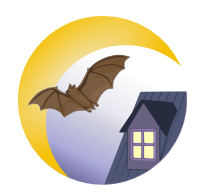Long-eared bat

Latin name: Myotis evotis
Average size: Total length of 7-10 cm
Wingspan: 24-29 cm
Weight: 4-9 g
External characteristics: The long-eared myotis's name comes from its long ears, the longest of any North American myotis species. This species can easily be confused with Myotis keenii. Its fur is dull and is pale brown to straw-coloured. The subspecies M. evotis pacificus that lives on the west coast has a darker fur. Its ears and the membranes of its wings and tail are black. The tragus is long and slender.
Habitat: The long-eared myotis is found in temperate western North America. In Canada, it can be found from central to southern British Columbia, as well as in southern Alberta and Saskatchewan. This species can inhabit a wide variety of habitats, but is most commonly found in forested areas. It roosts in trees cavities, snags, rock crevices, buildings, caves or mines. In the summer, females form small maternity colonies, while males generally live alone or in small groups. The winter ecology of this species is unknown. This species is most likely a migratory bat.
Reproduction: The long-eared myotis's reproductive biology is relatively unknown. Most of the reproductive data is anecdotal. Mating occurs in autumn or early winter. Females give birth to one pup after a gestation period of 40 to 60 days. The young are born in June or July and weight around 1 to 1.5 grams.
Seen in: Alberta, British-Columbia, Northwest Territories, Saskatchewan

